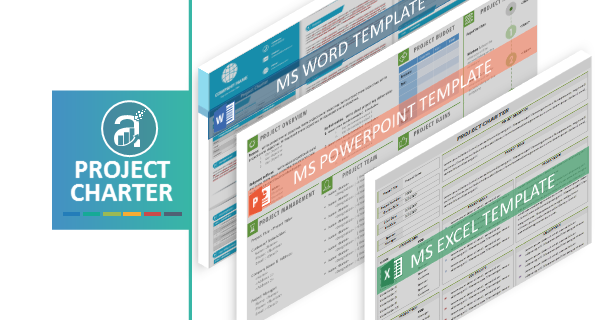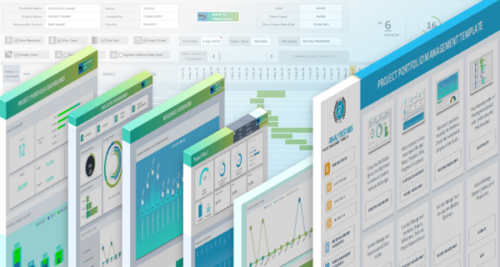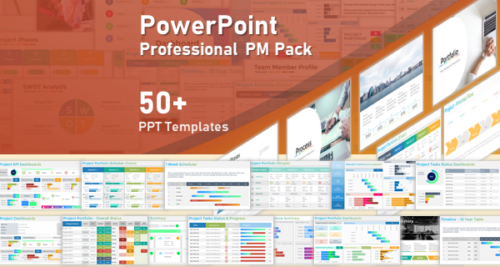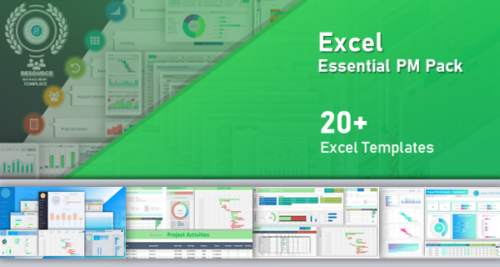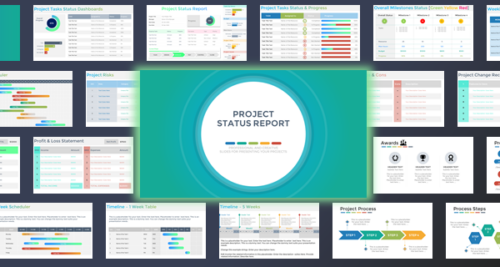Project Charter Templates Pack – Excel, PowerPoint & Word
Project charters are the foundation for successful project execution. They serve as a roadmap, clearly outlining the project’s goals, scope, and stakeholders. A well-crafted charter ensures everyone involved is on the same page, minimizing confusion and maximizing efficiency.
Original price was: $ 99.$ 49Current price is: $ 49.
51% Off
ON SALE: LIMITED TIME OFFER
Project Charter Templates Pack – Excel, PowerPoint & Word
Original price was: $ 99.$ 49Current price is: $ 49.
51% Off
ON SALE: LIMITED TIME OFFER
A project charter is a crucial document that outlines the scope, objectives, and participants in a project. It provides a preliminary delineation of roles and responsibilities, outlines the project objectives, identifies the main stakeholders, and defines the authority of the project manager. Whether you’re in IT, construction, marketing, or any other sector, having a robust project charter can help set your projects up for success. This guide provides free, downloadable templates in Excel, Word, and PowerPoint formats to streamline your project planning process.
EXCEL PROJECT CHARTER
PROJECT CHARTER EXCEL TEMPLATES.
Excel templates are particularly useful for their calculation capabilities, making them ideal for budgeting and tracking multiple project metrics. Great for including tables to outline project phases, milestones, and budget components. Our Excel Project Charters helps you to create the complete charter of a Project. We have included Standard Project Charter, Advanced Project Charter in Excel.
Benefits of Using an Excel Template
- Automated Calculations: Automatically calculate budgets, resources, and timelines.
- Easy Tracking: Track project milestones and changes effortlessly.
- Customizable: Fully customizable to suit project-specific needs.
2Excel Templates
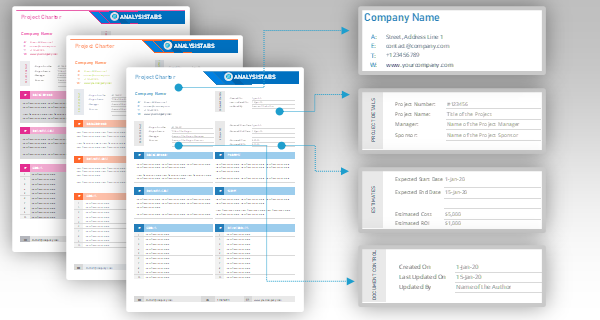
Project Charter
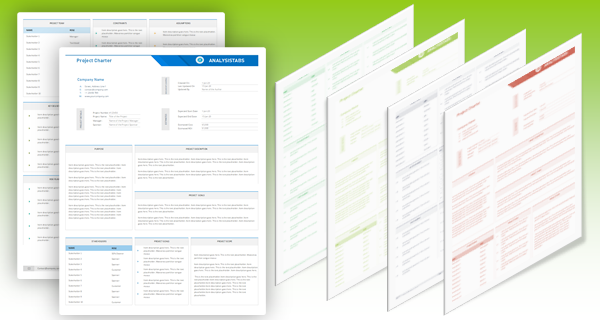
Project Charter – Advanced
PROJECT CHARTER
PROJECT CHARTER POWERPOINT TEMPLATES.
PowerPoint templates are perfect for presenting project plans to teams and stakeholders visually. Our PowerPoint Project Charter template includes slides designed to highlight key project aspects clearly and engagingly. Our Project Charter PPTs helps you to create the complete charter of a Project. We have included Simple Project Charter, Advanced Project Charter and Printable Project Charter.
Benefits of Using a PowerPoint Template
- Visual Appeal: Use engaging visuals to communicate project details.
- Easy to Present: Ideal for stakeholder meetings and presentations.
- Interactive Features: Embed charts, timelines, and other interactive elements.
3PowerPoint Templates
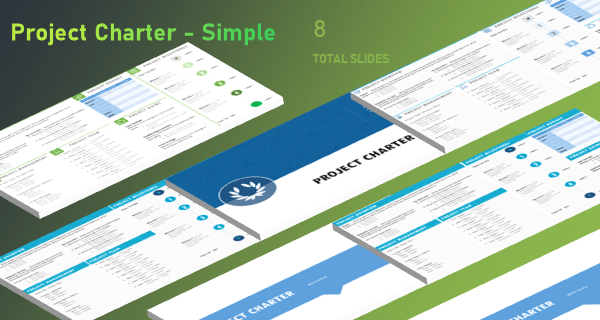
Project Charter – Simple
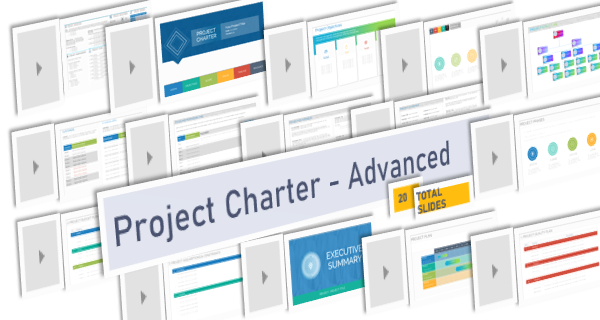
Project Charter – Advanced

Project Charter – PowerPoint Presentation
WORD PROJECT CHARTERS
PROJECT CHARTER WORD TEMPLATES.
Word templates provide a straightforward approach for those who need a text-heavy document. Our Word Project Charter template is designed with structured sections that you can easily adapt to your project’s requirements. Project Charters in Word helps you to create the complete charter of a Project. We have included Standard Project Charter, Team Project Charter in Word.
Benefits of Using a Word Template
- Structured Document: Easy to follow with clear headings and sections.
- Flexible Editing: Simple to edit, add, or remove sections as needed.
- Wide Compatibility: Easily accessible and shareable format.
2Word Templates
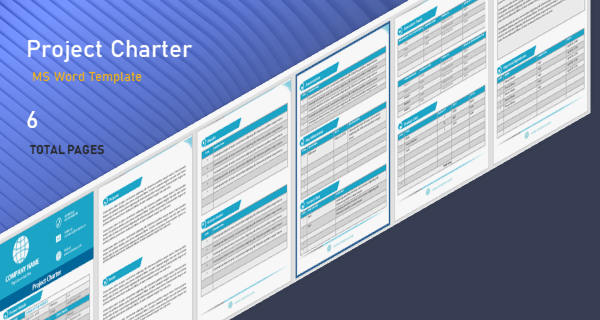
Project Charter

Project Team Charter
PROJECT MANAGEMENT DASHBOARD
+BONUS:
3 PROJECT MANAGEMENT DASHBOARD PRESENTATIONS.
3 Creative Project Management Dashboard Templates Provided to Present High Level Project Management Dashboards, Executive Project Management Dashboards and Project Quality Management Dashboards.
3PowerPoint Templates
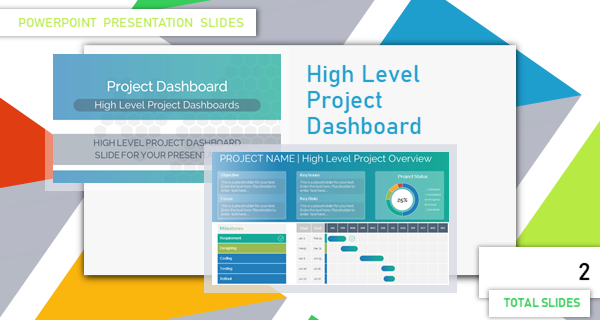
High Level Project Dashboard
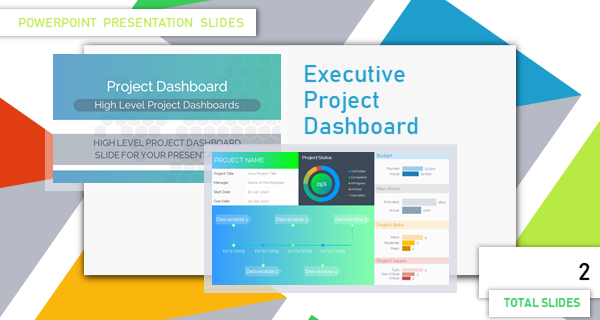
Executive Project Dashboard
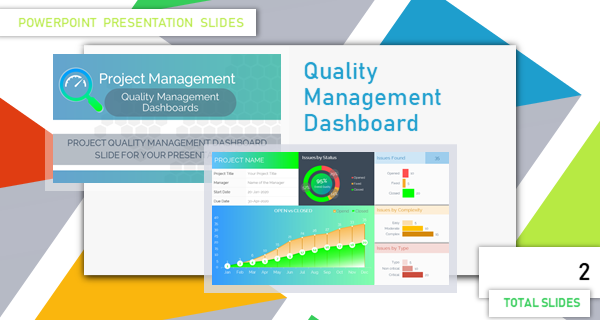
Quality Management Dashboard
How Project Charters and Dashboards Work Together?
Project charters and project dashboards are like two sides of the same coin, working in tandem to guide your project to success.
The project charter lays the foundation, clearly outlining the project’s goals, scope, and stakeholders. It serves as a shared document that everyone refers to throughout the project lifecycle.
Project dashboards, on the other hand, provide a visual snapshot of project progress. They translate the information from your project charter into actionable metrics and charts, enabling you to:
- Track progress: Monitor how close you are to achieving project milestones and deadlines.
- Identify roadblocks: Quickly spot potential issues that could derail the project.
- Measure performance: Evaluate project health based on pre-defined success criteria outlined in the charter.
- Improve communication: Dashboards provide a central communication hub, keeping stakeholders informed of project progress.
Using the Project Charter along with the High Level Project Dashboard, Executive Project Dashboard, and Quality Management Dashboard can significantly enhance the effectiveness of your project management by offering a comprehensive suite of tools that cater to different levels and aspects of project oversight. Here’s how each template can be helpful:
What to Include in Your Project Charter?
A good project charter should address the following key elements:
- Project Overview: Briefly describe the project, its purpose, and the problem it aims to solve.
- Project Objectives: Clearly define the project’s goals and desired outcomes. What do you hope to achieve? How will success be measured?
- Project Scope: Outline the boundaries of the project. What deliverables are included? What are the limitations?
- Roles & Responsibilities: Identify key stakeholders and their roles in the project. Who is responsible for what?
- Timeline & Budget: Establish a tentative timeline with major milestones and a high-level budget estimate.
- Assumptions & Risks: List any assumptions made about the project and potential risks that could impact delivery.
- Approval Section: Include a space for relevant parties to sign off on the charter, signifying their agreement.
How to Fill Out a Project Charter?
A project charter lays the foundation for your project by outlining its goals, scope, and key players. Here’s a breakdown on how to fill one out:
Step 1: Start with the Basics:
- Project Name & Description: Give your project a clear and concise title. Briefly describe what the project aims to achieve.
- Project Sponsor & Team: Identify the person authorizing and championing the project (sponsor) and the project manager who will lead the execution.
- Stakeholders: List everyone with an interest in the project’s outcome, including decision-makers, impacted teams, and end-users.
Step 2: Define Goals and Objectives:
- Project Purpose: Explain the rationale behind the project. Why is it important to undertake this project? How does it align with organizational goals?
- Project Objectives: Set clear, achievable goals using the SMART method (Specific, Measurable, Achievable, Relevant, and Time-bound).
Step 3: Outline the Scope & Deliverables:
- Project Scope: Define the boundaries of your project. What’s included and what’s not? Be clear to avoid scope creep.
- Deliverables: List the tangible outputs expected from the project. Make sure they address the project objectives.
Step 4: Consider the Timeline & Resources:
- Timeline: Provide a high-level overview of the project timeframe, including key milestones and deadlines.
- Budget: Estimate the overall cost of the project, including personnel, materials, and any required tools.
Step 5: Identify Risks and Assumptions:
- Risks: List potential challenges that could derail the project. Briefly outline mitigation plans.
- Assumptions: Specify underlying beliefs about the project environment that may impact the project’s success.
Step 6: Approval Process:
- Define the approval workflow for the final project charter. This typically involves sign-off from the project sponsor and key stakeholders.
Tips:
- Keep it concise and focused on key information.
- Use clear and easy-to-understand language.
- Involve relevant stakeholders in the process.
- Get the project sponsor’s approval before finalizing the charter.
By following these steps, you can create a comprehensive project charter that sets your project up for success. Our project management templates (project charter templates) simplifies this process.
Why Use Project Charter Templates?
- Streamlined Project Initiation: Project Charter Templates simplify the process of starting a new project by providing a structured format for documenting essential information. This structure ensures that all critical elements of the project are considered, such as objectives, scope, and stakeholders.
- Consistency and Clarity: Using a template ensures that every project follows a consistent format, making it easier for team members and stakeholders to understand the project’s goals and deliverables quickly. This consistency is crucial for organizations managing multiple projects simultaneously.
- Efficient Communication: A well-structured Project Charter serves as a key communication tool within the organization and with external parties. It succinctly outlines the project’s parameters, reducing misunderstandings and providing a clear reference point throughout the project lifecycle.
- Compliance and Documentation: Many industries have regulatory requirements or internal guidelines that projects need to comply with. A Project Charter helps ensure that all necessary information is documented from the start, aiding in compliance and audit processes.
- Save Time: No need to reinvent the wheel. Templates provide a structured framework to get you started quickly.
Who Uses Project Charter Templates?
- Project Managers: Project managers use these templates as a foundational tool for defining the approach and oversight of a project. It helps them to manage expectations and align the interests of various stakeholders.
- Business Executives: Executives utilize project charters to evaluate the strategic alignment of a project with the organization’s goals, making decisions about resource allocation and prioritization.
- Project Teams: Team members refer to the project charter for guidance on project objectives and their roles and responsibilities within the project. This clarity supports effective teamwork and accountability.
- Stakeholders: External stakeholders, such as clients, partners, and suppliers, often review the project charter to understand their involvement and how the project will impact them.
Trusted by 6,500+ users worldwide
Project Managers from the biggest brands in the world choose us for managing their Projects, Tasks and Resources.



